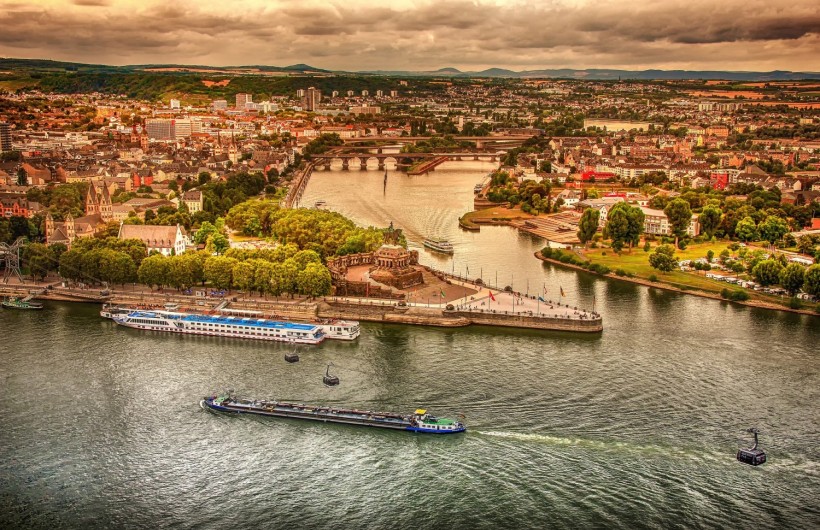Due to extreme heat and a lack of precipitation, water levels on the Rhine River, the second-largest river in Europe, have continued to decline, making it difficult for many vessels to operate at full capacity.

Rhine River
Copernicus Sentinel-2 Satellites Capture the Rhine River Water Level
According to Phys.org, the Copernicus Sentinel-2 satellites capture high-resolution photos that provide information about the Earth's ecosystem, including vegetation, soil, and coastal regions. The mission is carried out by two satellites, each of which has an improved multispectral imager-a camera that can capture optical images at wavelengths other than visible light.
Impact of Low Water Level to Sailing Ships
The Rhine River, which flows from the Swiss Alps to the North Sea, is a crucial transportation route for a variety of goods, including wheat, chemicals, and coal. Cargo ships must travel with less weight when the sea level falls to prevent running aground.
Water levels at the Kaub chokepoint in Frankfurt decreased to 32 cm on Monday, down from 42 cm the previous week. However, because ships need about 1.5 m to sail fully loaded, it is challenging for larger ships to navigate the seas. Despite only operating at about 25% to 35% of their capacity, freight ships are still in operation.
Low water levels are emerging earlier than usual, with the lowest water levels typically recorded in September or October. However, reduced temperatures and predicted rainfall forecasted for this week may offer relief to the Rhine.
Declining Water Volume Across Europe
The phenomenon facing the Rhine is widespread throughout much of Europe, leading to wildfires and water shortages. In 2018, a drought that was recorded in October shaved 0.2 percent off German GDP that year, according to Deutsche Bank Research. The Rhine's reference depth at Kaub fall as low as 25 cm.
Reuters reported that the German economy is already struggling with high inflation, supply chain delays, and skyrocketing gas costs as a result of Russia's invasion of Ukraine in February. Shipping bottlenecks are an additional burden on the German economy.
Economists said that the Rhine shipping slowdown might reduce this year's overall economic growth in Europe's biggest economy by as much as 0.5 percentage points.
According to Techxplore, Deutsche Bank Research economist Marc Schattenberg said that the low levels have come much earlier this time. He said that if the problems we are now observing last longer than in 2018, the loss of economic value will become all the more serious.
BASF, whose Ludwigshafen base is located south of the Kaub choke-point, claimed that the low water levels had not yet restricted its production, but it issued a warning that it could not completely rule out production restrictions for particular units in the coming weeks.
ALSO READ: Climate Change Increases River Flow Volume, More Floods & Droughts Elsewhere
Contingency Plans of Companies
Heavyweight industrial companies stationed along the Rhine depend on the waterway to transport commodities to and from their locations. The ThyssenKrupp corporation, with headquarters in Duisburg, announced in a statement that it had taken steps to ensure the supply of its raw materials.
In order to make up for the Rhine's lack of capacity, businesses are shipping more goods by truck or train.
In the event that the Rhine's low water levels continue to decline, Germany intends to give precedence on the nation's rail networks to the movement of materials and equipment required for energy production. Additionally, shipbuilders have been developing vessel designs that can withstand falling water levels.
RELATED ARTICLE: Colorado River Flow Decreases Because Of Climate Change
Check out more news and information on Environment in Science Times.




![Earth's Quasi-Moon Kamo‘oalewa Could Originate From Lunar Surface Not Asteroid Belt [Study]](https://1721181113.rsc.cdn77.org/data/thumbs/full/53275/89/56/50/40/earths-quasi-moon-kamo-oalewa-could-originate-from-lunar-surface-not-asteroid-belt-study.png)









